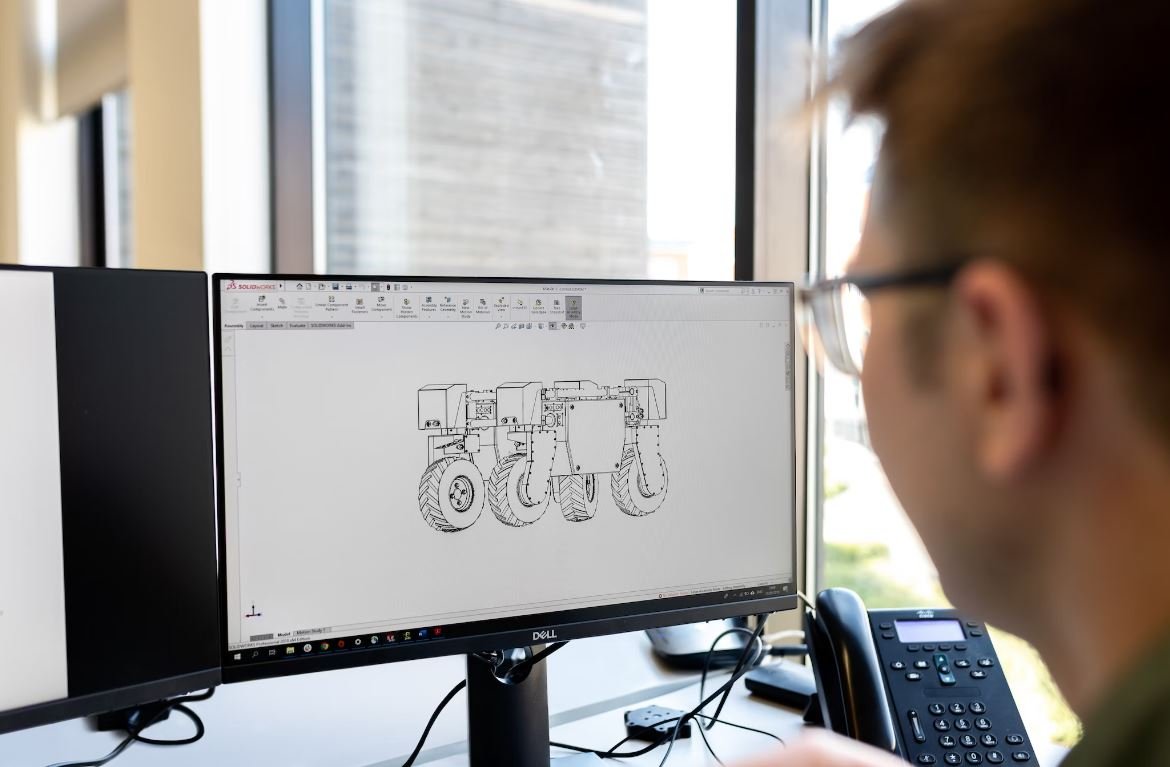What Is Deepfake AI Technology
Deepfake AI technology has gained significant attention in recent years due to its ability to create realistic but manipulated videos or images that can be difficult to distinguish from actual footage. This rapidly advancing technology poses challenges and raises ethical concerns regarding the potential misuse and spread of misinformation.
Key Takeaways:
- Deepfake AI technology enables the creation of highly realistic fake videos or images.
- The technology poses significant challenges in terms of misinformation and trust.
- Ethical concerns surrounding deepfake AI technology are an important topic for consideration.
**Deepfake** refers to the use of artificial intelligence (AI) to generate media that falsely depicts events or individuals. These media can include manipulated videos, images, or even audio recordings.
Unlike traditional forms of image or video manipulation, deepfake AI technology can fabricate highly realistic content that is often indistinguishable to the human eye. *The sophistication of deepfake AI algorithms continues to improve, making it increasingly challenging to differentiate between real and fake content.*
The potential applications of deepfake AI technology extend beyond harmless entertainment and can be used for malicious purposes. It is crucial to understand both the capabilities and risks associated with this technology.
The Evolution and Development of Deepfake AI Technology
Deepfake AI technology has seen significant advancements in recent years due to breakthroughs in deep learning and neural networks. **Generative Adversarial Networks (GANs)**, a type of AI algorithm, play a crucial role in the creation of deepfakes by generating realistic media based on existing data.
GANs consist of two AI models: a generator and a discriminator. The generator aims to produce fake media, while the discriminator’s role is to identify whether the media is real or fake. Through an iterative process of training, both models improve, resulting in the creation of more convincing deepfakes.
The Impact and Challenges of Deepfake AI Technology
The rise of deepfake AI technology has raised significant concerns and challenges. Here are some noteworthy impacts:
- **Misinformation and Fake News**: Deepfakes have the potential to spread misinformation, endangering public trust and compromising media integrity.
- **Privacy and Consent**: Deepfakes can be used to violate individuals’ privacy and consent, creating a need for more robust legal protections.
- **Social and Political Manipulation**: The use of deepfakes in manipulating public opinion, elections, or incriminating individuals is a growing concern.
*The impact of deepfake AI technology reaches various aspects of society, necessitating thoughtful responses and proactive measures to mitigate potential harm.*
Current and Potential Mitigation Strategies
Addressing the challenges associated with deepfake AI technology requires a multi-pronged approach. Here are some proposed strategies:
- *Advanced Detection Tools*: Investing in the development of robust algorithms and tools that can identify deepfakes is crucial.
- *Educational Campaigns*: Raising awareness about deepfakes and their implications helps individuals become more discerning consumers of media.
- *Legal Regulations*: Governments and organizations should consider enacting regulations to protect individuals from the harmful effects of deepfakes.
Interesting Deepfake AI Technology Examples
Let’s take a closer look at some real-world examples of deepfake AI technology:
| Deepfake Example | Description |
|---|---|
| Mark Zuckerberg’s Deepfake | A deepfake video of Facebook CEO Mark Zuckerberg was created to showcase the technology’s potential impact on public figures. |
| Deepfake Pornography | Deepfake AI technology has been used to create and distribute non-consensual pornographic content, highlighting the importance of consent and privacy protection. |
*These examples demonstrate both the creative potential and potential harm associated with deepfake AI technology.*
The Future of Deepfake AI Technology
As deepfake AI technology continues to advance, it is essential to remain vigilant and proactive. Public awareness, technological advancements, and regulatory frameworks will play crucial roles in shaping the future of this technology.
By recognizing the challenges posed by deepfake AI technology and taking appropriate measures, individuals, organizations, and societies can navigate this complex landscape with greater resilience.

Common Misconceptions
1. Deepfake AI Technology involves only video manipulation.
One common misconception about deepfake AI technology is that it only involves manipulating videos. While it is true that deepfakes are primarily known for manipulating videos to make someone appear to say or do something they didn’t, the technology is not limited to videos alone. Deepfakes can also be applied to audio, images, and even text.
- Deepfake AI can alter audio recordings, making it possible to create fake voice clips.
- The technology can also generate lifelike images of individuals who do not exist.
- Deepfake algorithms can be used to generate convincing fake text, such as news articles or social media posts.
2. Deepfake AI Technology is only used for malicious purposes.
Another misconception surrounding deepfake AI technology is that it is solely used for malicious purposes. While deepfakes can indeed be misused to spread misinformation, defame individuals, or create hoaxes, there are legitimate and positive applications as well. For example, the entertainment industry can utilize deepfake technology to create realistic visual effects or enhance performances.
- Deepfake technology can be used in filmmaking to seamlessly incorporate actors into scenes.
- It can facilitate the restoration of old and damaged photographs or films.
- Medical professionals can utilize deepfakes to simulate scenarios for training purposes.
3. Detecting deepfakes is always easy and straightforward.
Some people assume that detecting deepfakes is a simple process and can be done without much effort. However, identifying deepfakes can be quite challenging, as the technology powering these manipulations continues to advance. Deepfake detection often requires the expertise of professionals and sophisticated tools to distinguish between genuine and fabricated content.
- Deepfake detection algorithms need to keep up with the evolving techniques used to create and improve deepfakes.
- The analysis of subtle visual and audio cues is necessary to identify deepfakes accurately.
- Developing robust detection tools is an ongoing race against the advancements in deepfake technology.
4. Deepfake videos are always realistic and convincing.
While deepfake videos can be extremely realistic and convincing, it is a misconception to assume that all deepfakes are flawless. The quality of deepfakes can vary greatly, with some being obvious forgeries that can be easily identified, especially by experts. However, as the technology progresses, deepfakes are becoming increasingly sophisticated and harder to distinguish from genuine videos.
- High-quality deepfakes are often difficult to differentiate from real videos without careful scrutiny.
- Poorly made deepfakes may display visual artifacts or inconsistencies that give them away.
- Increased computing power and better algorithms contribute to the improvement of deepfake realism.
5. Deepfake AI technology is a recent invention.
Many people believe that deepfake AI technology is a relatively new development. While the term “deepfake” itself emerged around 2017, the underlying techniques and technologies have been around for years. Deepfake AI builds upon various methods in machine learning, computer vision, and AI, which have been under development for decades.
- Early examples of digital image manipulation laid the foundation for deepfake technology.
- Face-swapping techniques and computer graphics advancements paved the way for deepfakes.
- Deepfake AI technology has been continuously evolving since its inception.

What Is Deepfake AI Technology
Deepfake AI technology has gained significant attention in recent years due to its ability to generate highly realistic fake videos. This technology combines artificial intelligence and deep learning algorithms to manipulate existing video footage and superimpose someone else’s face onto another person’s body. The following tables provide insights into different aspects of deepfake AI technology:
1. Top Deepfake Applications
Illustrates various applications of deepfake AI technology in different fields.
| Application | Field |
|---|---|
| Entertainment | Media |
| Political Satire | Politics |
| Training Models | Artificial Intelligence |
2. Notable Deepfake Incidents
Highlights notable incidents where deepfake technology has been misused or caused controversy.
| Event | Year |
|---|---|
| Deepfake Porn | 2017 |
| Political Manipulation | 2019 |
| Cyberbullying | 2020 |
3. Techniques Behind Deepfake Generation
Explores the underlying techniques utilized for generating deepfake videos.
| Technique | Description |
|---|---|
| Generative Adversarial Networks (GANs) | Uses two neural networks, a generator and a discriminator, to produce high-fidelity fake videos. |
| Autoencoders | Utilizes an encoder and decoder to capture and recreate facial features. |
| Recurrent Neural Networks (RNNs) | Enhances temporal coherence in video sequences to make deepfakes more realistic. |
4. Deepfake Detection Methods
Presents different methods developed for detecting deepfake videos and distinguishing them from real ones.
| Method | Principle |
|---|---|
| Forensic Analysis | Examines visual artifacts or inconsistencies in the video to identify potential fake elements. |
| Facial Manipulation Detection | Analyzes facial movements and expressions for signs of manipulation. |
| DNN-based Classification | Employs deep neural networks to classify videos as real or fake based on learned features. |
5. Deepfake Regulation Efforts
Outlines the efforts made by governments and organizations to regulate the use and spread of deepfake AI technology.
| Country/Organization | Regulation Details |
|---|---|
| California, USA | Implemented the AB 730 bill to criminalize deepfake distribution without consent. |
| European Union | Proposed regulations to combat deepfake dissemination during elections. |
| Launched a deepfake detection challenge to develop effective identification methods. |
6. Impact on Journalism
Examines the implications of deepfake technology on journalism and media trust.
| Impact Area | Effect |
|---|---|
| News Credibility | Challenges trust in media due to the potential spread of manipulated news through deepfake videos. |
| Source Authentication | Makes it more difficult to verify the authenticity of video sources. |
| Misinformation | Facilitates the creation and dissemination of false information through convincing deepfake videos. |
7. Deepfake in Entertainment Industry
Explores the impact of deepfake AI technology on the entertainment industry.
| Aspect | Examples |
|---|---|
| Casting Choices | Recreating deceased actors’ performances or changing actors’ appearances. |
| Special Effects | Enhancing movie scenes with realistic digital effects. |
| Virtual Reality | Creating immersive experiences by superimposing actors’ faces onto avatars. |
8. Deepfake and Privacy Concerns
Addresses the privacy implications associated with the use of deepfake AI technology.
| Concerns | Explanation |
|---|---|
| Identity Theft | Potential for cybercriminals to use deepfake technology for impersonation and fraud. |
| Reputation Damage | Individuals may be targeted with fake videos aimed at harming their reputation. |
| Social Engineering Attacks | Deepfakes could be used to manipulate victims into disclosing sensitive information. |
9. Deepfake AI and Ethical Considerations
Explores the ethical dilemmas associated with the development and use of deepfake AI technology.
| Consideration | Explanation |
|---|---|
| Consent | The creation of deepfakes without informed consent raises serious ethical concerns. |
| Misuse Potential | Deepfake technology can be used to manipulate or deceive individuals for malicious purposes. |
| Moral Responsibility | Debates exist regarding who should be held accountable for the consequences of deepfake AI technology. |
10. Future of Deepfake AI Technology
Discusses the potential advancements and future directions in the field of deepfake AI technology.
| Aspect | Description |
|---|---|
| Improved Realism | Advancements in deep learning techniques are expected to create even more convincing deepfakes. |
| Countermeasures | Ongoing research and development of tools to detect and mitigate the impact of deepfake videos. |
| Ethical Guidelines | Efforts to establish ethical frameworks and guidelines to govern the use of deepfake AI technology. |
Conclusion
In conclusion, deepfake AI technology is undeniably a double-edged sword. While it has fascinating applications in entertainment and artificial intelligence, it also raises significant concerns regarding privacy, misinformation, and ethical implications. The tables provided offer an insightful glimpse into the numerous aspects surrounding deepfake technology. As the technology continues to evolve, it becomes ever more crucial to develop robust detection methods, implement effective regulations, and encourage responsible use to mitigate the risks associated with deepfake AI.
Frequently Asked Questions
What is deepfake AI technology?
Deepfake AI technology is a type of artificial intelligence that uses deep learning algorithms to generate realistic counterfeit media, such as videos or audio recordings, that appear genuine but are actually manipulated or fabricated. It involves mapping facial or vocal expressions from one person onto another, resulting in the creation of highly convincing and often deceptive content.
How does deepfake AI work?
Deepfake AI works by utilizing a neural network called an autoencoder. First, it analyzes and learns patterns from a large dataset of real videos or audio recordings of a target person. Then, it employs an encoder to extract the key features and an algorithm to map these features onto a different person’s face or voice. Lastly, a decoder reconstructs the altered media, creating a deepfake that mimics the target person’s appearance or speech.
What are the potential applications of deepfake AI technology?
While deepfake AI technology has raised concerns due to its potential misuse, it also has various legitimate applications. Some examples include entertainment industry, where deepfake technology enables realistic special effects and dubbing, and academic research, where it aids in computer vision and speech recognition advancements. Moreover, it has potential applications in medicine, journalism, and training simulations.
What are the ethical concerns associated with deepfake AI technology?
The ethical concerns surrounding deepfake AI technology primarily stem from its potential for misuse and misinformation. Deepfakes can be used for non-consensual pornography, revenge porn, identity theft, and political manipulation. They can also undermine trust in media and democracy. Additionally, privacy concerns arise as it becomes increasingly difficult to discern real from fake, leading to potential harm to individuals and society.
How can deepfake AI technology be detected?
Detecting deepfakes can be challenging as the technology evolves. However, several methods have emerged to identify potential deepfakes. These include analyzing inconsistencies in facial expressions, unnatural eye movements, artifacts in the image or video, and anomalies in audio or speech patterns. Additionally, advancements in forensic techniques and AI algorithms are continuously being developed to improve detection capabilities.
Are there legal consequences for creating or distributing deepfakes?
Legal consequences for creating or distributing deepfakes vary by jurisdiction. In some regions, creating and sharing deepfakes without consent may be considered defamation, fraud, or an invasion of privacy. However, laws regarding deepfakes are still evolving, and the complexity of jurisdictional boundaries can make prosecution challenging. It is crucial for legislators to adapt and create legislation that appropriately addresses the impact of deepfake technology.
Can deepfake AI technology be used for positive purposes?
Yes, deepfake AI technology can be utilized for positive purposes. It has the potential to revolutionize the entertainment industry by creating highly realistic special effects and dubbing. In the field of education, it can enhance learning experiences by simulating historical figures or speaking different languages. Additionally, within the realm of research, deepfake AI can contribute to advancements in computer vision and speech recognition, pushing the boundaries of AI technology.
What steps can individuals take to protect themselves from deepfakes?
Individuals can take several steps to protect themselves from the potential harm caused by deepfakes. These include being cautious of the sources and authenticity of media they consume, fact-checking information before sharing, and using reputable platforms for online interactions. Additionally, maintaining strong privacy settings on social media platforms can minimize the availability of personal data that could be exploited for deepfake creation.
What are the ongoing efforts to combat deepfake AI technology?
Various organizations, researchers, and technology companies are actively working to combat deepfake AI technology. These efforts include developing advanced detection tools, creating benchmarks for deepfake identification, promoting media literacy and education, and collaborating with social media platforms to implement stricter policies against the dissemination of deepfakes. Additionally, governments are exploring legislative options to address the challenges posed by deepfake technology.
How might deepfake AI technology evolve in the future?
The future of deepfake AI technology is uncertain, but it is expected to continue evolving rapidly. As detection methods improve, developers of deepfake technology are likely to enhance their algorithms to bypass detection. The integration of deepfake technology with virtual reality and augmented reality may also lead to more immersive and convincing experiences. Ultimately, as deepfake AI advances, it is crucial to have robust safeguards, both technological and legislative, to mitigate its potential negative consequences.




